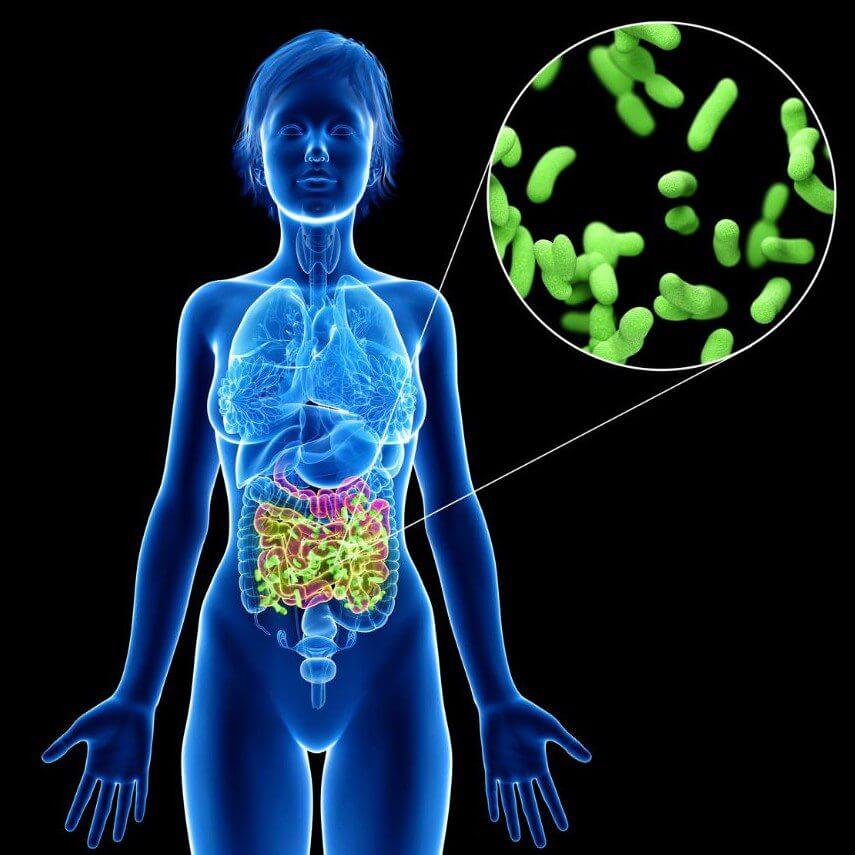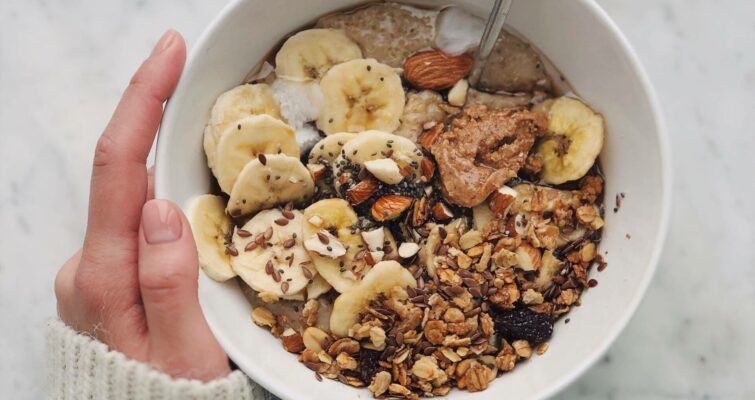So you want to clean up your diet and beat the belly bloat, but just when you start to make healthier food choices, you notice the bloating is back with a vengeance. Why is this happening? And why bother eating healthier if you’re feeling worse?
The culprit behind your digestive woes is likely an increase in fiber intake, which is part of a healthy diet, but can make you feel gassy or bloated. But don’t give up on fiber just yet! We’ll talk about how to get more dietary fiber the right way, and how to avoid the uncomfortable bloating side effects from too much fiber (or the wrong kinds!).
Find out the best diet for your unique chemistry and how to make it work for you inside the Superwoman Circle.
Here are some tips for avoiding the discomfort and getting the most out of your fiber-rich diet.
How much fiber do you actually need?
Most people aren’t getting nearly enough fiber in their diets. At best, most women only get about 15 grams of fiber per day, when you really need closer to 30. So, most people get about half of what would be ideal. Research shows that a fiber intake of 30 or more grams of fiber per day has health benefits like helping you eat fewer calories, having regular bowel movements, and a reduced risk of cardiovascular disease (1)
So, adding fiber-rich foods to your diet (like beans, minimally processed whole grains, and nuts & seeds) is good for you. But eating foods with more fiber can come with some uncomfortable side effects—especially in the beginning—for a lot of people.
Excess gas, bloating, and even stomach pain aren’t uncommon when making fiber more of a priority in your diet. And how your digestive system handles high fiber foods has a lot to do with what’s going on in your microbiome.
Watch: Tips for Stubborn Weight Gain, Which of These 3 Types Are You?
Your microbiome may be causing bloating after you eat fiber

Your digestive system is home to trillions of microbes, collectively known as the microbiome. This community of gut bacteria plays an important role in your overall health, and it can influence how you tolerate fiber-rich foods.
If you experience bloating after eating a lot of fiber, it could be because your microbiome isn’t used to it. A gut with low microbial diversity—or a weaker gut—will struggle to digest the increased dietary fiber. This actually increases inflammation in a lot of people, which contributes to bloating and other digestive symptoms. On the contrary, a robust, diverse microbiome handles high fiber foods very well, and can decrease inflammation in your digestive tract.
One recent study compared two diets and measured the inflammation produced from both
The first increased fiber intake. Participants increased how much fiber they ate from 20 to 40 grams per day.
The second group added 6 servings of fermented foods to their daily diet. These are things like kefir, sauerkraut, or kimchi.
When they looked at inflammation, which is often the root cause of bloating, they found that the fiber group had mixed results. Some people had a decrease in inflammation, while others had a big increase (and were pretty uncomfortable with the higher dietary fiber intake) (2).
The surprising thing? In the group that added fermented foods to their diet, every person experienced increased diversity in their microbiome (which means a healthier gut), and they had a dramatic reduction in inflammatory markers.
Why? Well, it all depended on the health of their gut microbiome. So, here’s where to start with fiber to relieve bloating and maximize healthy digestion.
Related: How to Relieve Bloating Fast
First, boost your microbial diversity

This is the prep work to get more fiber in your diet. This step is crucial to help you reap the health benefits of fiber, considering you’re likely only getting half of what’s recommended. If your gut health isn’t ideal, it’s not a good idea to load up on fiber in the beginning.
Start with fermented foods to boost your gut microbiome, like:
- Kefir
- Yogurt
- Sauerkraut
- Kimchi
- Miso
- Kombucha
These are all rich in probiotics, which helps to diversify your microbiome and improve digestion. As the microbes become more diverse, they help break down fiber better.
Read: Should You Take a Probiotic to Help with Bloating?
Then, increase your fiber intake gradually
Once you’ve taken steps to diversify your microbiome, go slowly to increase how much fiber you eat. For example: each week add 1 to 2 more servings of beans, greens, or minimally-processed whole grains.
I like to start with:
- Leafy greens
- Oats & quinoa
- Berries
- Nuts & seeds
These are all easy to add to meals, and you won’t get the same uncomfortable side effects as when your gut isn’t used to higher fiber intake. *Note: pay attention to how your body responds to fiber. If you’re still feeling discomfort after adding in more fiber, you may need to consult a holistic physician to rule out things like SIBO or Candida overgrowth.
Take a look at what kinds of fiber you’re eating
There are two types of fiber in your diet.
1.Soluble fiber
- Dissolves in water.
- Slows down digestion and sugar absorption.
- Forms a kind of ‘gel’ in the digestive tract as it binds with water.
- Can help curb appetite and cravings.
- May reduce LDL or ‘bad’ cholesterol.
2.Insoluble fiber
- Insoluble fiber is ‘roughage’.
- Adds bulk to stool & promotes bowel regularity.
- Probiotic bacteria cannot use or digest insoluble fiber.
- Can bind the absorption of some minerals
In summary, you’re better off eating mostly soluble fiber with a small side of insoluble fiber. Most soluble fibers also provide prebiotics, and they help fuel your gut bacteria.
Read: Herbal Remedies for Better Digestion
What are prebiotics and why do you need them?
Prebiotics come from dietary fiber, and their primary role is to fuel healthy gut bacteria in the colon (3). When the probiotic bacteria in your gut consume these fibers, they then produce unique nutritional metabolites like short-chain fatty acids that protect and nourish your gut.
All prebiotics are fiber, but not all fiber-rich foods are prebiotic. Without prebiotic fiber, the bacteria in the gut cannot thrive—and over time, less bacterial diversity can lead to other unwanted impacts—like increased bloating and gas.

Some foods that contain prebiotics include:
- Agave
- Chicory root
- Flaxseed
- Garlic
- Jerusalem artichoke
- Legumes (beans, chickpeas, lentils, soybeans)
- Nuts
- Onions, leeks, shallots, scallions
- Grains
- Fennel
- Asparagus
How to strategically incorporate more prebiotic foods
Based on my experience as a functional physician, here are some go-to ways I recommend to include prebiotics, without the unwanted effects:
- Start slow. Add one serving per day of a prebiotic food, and then gradually increase by 1 to 2 servings per week.
- Try a non-fiber prebiotic. Polyphenol-rich foods, like cranberries, pomegranates, blueberries, or cocoa have similar benefits in the gut and are often better tolerated when you’re just starting out.
- Try one new food at a time. If fiber is causing you trouble, give you gut a break by only introducing one new thing at a time. This will allow you to notice how your body adapts to fiber and new foods.
- Cooking your prebiotic vegetables. Whether you roast, steam, or sautee your vegetables, cooking makes them much easier to digest than if you eat them raw. Eventually, you’ll probably be able to enjoy more raw vegetables, but if you’re struggling in the beginning, opt for cooked!
- Try sprouted grains. Foods made with sprouted grains, like crackers, breads, or hot cereals make the prebiotic grains much easier to digest and remove some of the ‘anti-nutrients’ naturally found in many whole-grain products.
Listen to your gut
Always trust what your body is telling you and make adjustments as needed.
By following these simple strategies, you can safely add fiber to your diet in a way that supports your gut health while also helping to reduce bloating and unwanted digestive symptoms. Remember, it’s all about balance! With the right combination of fiber-rich foods and a healthy diet, you can ensure your digestive system is functioning optimally. Here’s to a happy gut!
Resources


